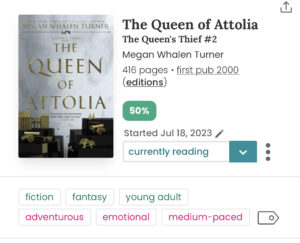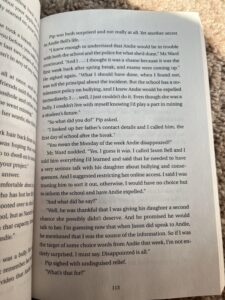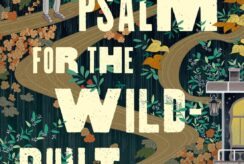By Jay Flood
I can be very picky when it comes to preferences, whether that be for food, music, movies, or books. I ask myself the same questions when choosing which book I will read next: What am I in the mood for? Do I want to read a series or a stand-alone? Do I want to read a heavy book or an easy-to-digest book? Do I want to read something familiar or something unfamiliar? These questions help me narrow down the list of books I want to read based on the mood I am in. But the ultimate decision is usually based on these four qualities I tend to be very picky about.
1. Paperback
If you ask a reader whether they prefer hardcovers or paperback, they will probably have a very passionate and definite answer. I have and will always answer paperback. I don’t like holding hardcover books in my hand when reading because they’re too stiff and heavy. Paperback books are flimsy and easier to hold. Hardcover books do look better on a bookshelf and they are more durable, so they aren’t damaged as easily and this can be appealing to some readers. However, I love being able to tell which books I have read and which ones I haven’t just by looking at the condition the book is in. I can tell which books I brought with me to the beach based on the color and wrinkles on the pages.
Exposure to humidity and light will turn the pages in your books yellow, so all of the books I bring to the beach stand out drastically from the untouched books on my shelf. When I read at the beach, I tend to read down by the water so accidental splashes are inevitable. That water will dry under the sun and the pages will become wrinkled, which makes the book expand and appear bigger. Books I have reread countless times are also noticeable on my shelf. I like looking at my bookshelves and seeing how loved my books are, rather than having my books be in perfect condition and appear untouched. Paperbacks do get damaged more easily, especially if you carry around a book in your bag everywhere like I do. However, paperbacks tend to be smaller than hardcovers so they also have a higher chance of fitting in your bag than hardcovers do.
The downside of only reading paperbacks is that when new books are released they’re released as hardcovers first and the paperback editions aren’t released for at least a couple of months. So when I’m excited about the release of a new book, I know I have to wait longer to read it, which can be frustrating. I have a list in my notes app on my phone of books I’m waiting for to be released as paperbacks and have some pre-ordered on Amazon as well. Even though it is very frustrating to have to wait, it is so worth it to be able to read the paperback version instead of the hardcover. Before I decide which book I will read next, I check to make sure there is a paperback version.
2. Little to No Romance Plot
Another quality I am picky about in books is the romance plot. I get bored and annoyed when romance is forced just for marketing purposes or because the author thinks romance needs to exist in all books. There are very few books where I actually enjoyed the romance plot and it’s typically because it’s subtle and more of an afterthought. When it’s not being shoved in your face and eclipsing the actual plot, the romance plots can be enjoyable. So when I’m looking for a book or series to read, I make sure it’s not listed in the romance genre. Storygraph has a feature that allows reviewers to tag genres they think the book belongs in, so when prospective readers are looking for more information about the book, they can view the list of genres it’s tagged as first. Before reading, I make sure the books aren’t tagged as romance.
If a book or series is recommended to me by a friend, family member, or social media, I make sure romance is not the focus of the book. If I see a fantasy book with a cool title, I read the description and if the description mentions any romance trope, I move on. I’m not completely opposed to romance. In fact, when done right, romance in books can be quite nice. But I have found that the best romances are the ones not marketed in the description of the book. The subtle, after-thought romances are the ones that feel real, not forced, and therefore are the best for me to read.



3. Shorter Chapters
This preference is not a deal-breaker and is not something I even think about until I am actually reading the book. But, I tend to prefer books with shorter chapters over books with longer chapters. The choppiness of scenes makes the book feel fast-paced and easier to digest. Longer chapters make the book seem like it’s never-ending. When I read, I like to make my stopping points at the end of a chapter. With shorter chapters, it’s easier to do. If the chapter ends off on a cliffhanger but you want to go to bed, you can read the next chapter because it’s only five pages long.
However, with longer chapters, you would not be able to read another chapter if it’s thirty pages long and you need to sleep. Stopping in the middle of a chapter feels wrong because it disrupts the pacing and it’s harder to remember where you left off. However, when you stop reading at the end of a chapter, that scene was wrapped up so it’s easier to remember what happened. In longer chapters there tends to be scene breaks anyway, so I feel like if each scene was a new chapter, the pacing would be better. Longer chapters don’t deter me from reading a book, but I do notice that when I read books with shorter chapters I enjoy it more and when I read books with longer chapters I feel like it drags on.
4. Font and Size
Reading books in high school always felt so difficult because the font and size of the words hurt my eyes and would make me tired. The spacing between the lines was so small, the font smushed the letters together, and the text color was almost bold which made it hard to read. I was always squinting trying to process each sentence, but that made it harder. The books I read now choose readable fonts, font size, text color, and line spacing which makes my eyes very happy. If I’m in a bookstore deciding between books, I’ll typically open to a random page to make sure the font is readable and the spacing isn’t too close together.
Books I read for High School Classes
Books I’ve Read Recently for Fun


Having preferences as a reader is almost expected. Even if your preferences aren’t necessarily deal breakers, books that include all of your preferences are more appealing than ones that don’t. Being picky can be a blessing and a curse. On the one hand, you might have to wait to read a book or miss out entirely, but on the other hand, it’s good to know what you like to continue to enjoy reading. Why force yourself to squint while reading or drag yourself through long chapters or hold heavy, stiff, hardcovers when there are so many books out there with readable fonts, short chapters, and flimsy, light, paperbacks? Having preferences or being picky means you’re more likely to consistently have great reading experiences than if you just read anything and everything.


